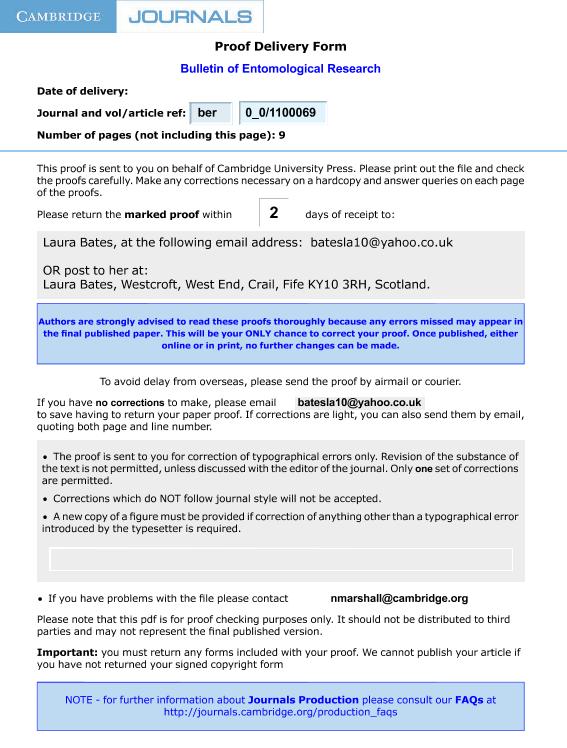Artículo
Chemical interaction between the larva of a dipteran parasitoid and its coleopteran host: A case of exploitation of the communication system during the searching behaviour?
Fecha de publicación:
06/2012
Editorial:
Cambridge University Press
Revista:
Bulletin of Entomological Research
ISSN:
0007-4853
Idioma:
Inglés
Tipo de recurso:
Artículo publicado
Clasificación temática:
Resumen
The robber fly Mallophora ruficauda is one of the principal apicultural pests in the Pampas region of Argentina. As adults, the flies prey on honey bees and other insects; while, as larvae, they parasitize scarab beetle larvae. Females of M. ruficauda lay eggs away from the host in tall grasses. After being dispersed by the wind, larvae drop to the ground, where they dig in search of their hosts. It is known that second instar larvae of M. ruficauda exhibit active host searching behaviour towards its preferred host, third instar larva of Cyclocephala signaticollis, using host-related chemical cues. Furthermore, previous works show that these chemical cues are produced in the posterior body half of hosts. However, the precise anatomical origin of these cues and whether they mediate any behaviour of C. signaticollis larvae remains yet unknown. In order to determine the precise origin of the chemical cue, we carried out olfactometer assays with different stimuli of extracts of the posterior C. signaticollis body half. Additionally, we tested whether C. signaticollis is attracted to any of the same extracts as in the previous experiments. We found that both second instar of M. ruficauda and third instar of C. signaticollis are attracted to extracts of the fermentation chamber (proctodeum). This is the first report of attraction of conspecific larvae in scarab beetles. We discuss a possible case of system communication exploitation in an immature parasitoid-host system.
Palabras clave:
Asilidae
,
Host Location
,
Infochemicals
,
Parasitoid
,
Scarabaeidae
Archivos asociados
Licencia
Identificadores
Colecciones
Articulos(IEGEBA)
Articulos de INSTITUTO DE ECOLOGIA, GENETICA Y EVOLUCION DE BS. AS
Articulos de INSTITUTO DE ECOLOGIA, GENETICA Y EVOLUCION DE BS. AS
Citación
Groba, Hernán Federico; Castelo, Marcela Karina; Chemical interaction between the larva of a dipteran parasitoid and its coleopteran host: A case of exploitation of the communication system during the searching behaviour?; Cambridge University Press; Bulletin of Entomological Research; 102; 3; 6-2012; 315-323
Compartir
Altmétricas




